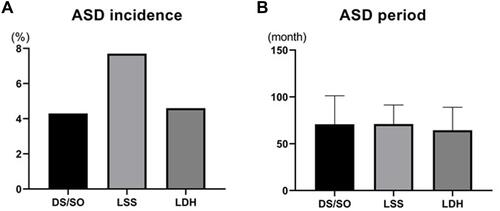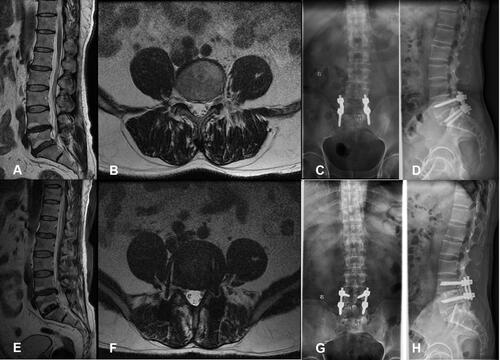Figures & data
Table 1 Characteristics of the Patients
Table 2 Characteristics of the Patients with ASD
Table 3 Comparison of Demographic and Surgical Parameters Between the ASD Group and N-ASD Group
Table 4 Comparison of Radiological Variables Between the ASD Group and N-ASD Group
Table 5 Logistic Regression Analysis of Risk Factors in ASD Patients
Figure 1 The incidence (A) and onset delay (B) of ASD between the three types of lumbar degenerative diseases. No difference was seen in the ASD incidence or ASD onset time.

Figure 2 Type case: Male, 49 y, with L5/S1 lumbar disc herniation, degeneration of the L4/5 intervertebral disc before the operation, and Pfirrmann grade IV (A and B). Transforaminal lumbar interbody fusion (C and D) was performed on lumbar 5/sacral 1 in February 2013, which significantly relieved his symptoms. In January 2018, the patient developed numbness and pain in the left lower extremity. Lumbar intervertebral disc MRI showed that the L4/5 disc was herniated and compress the left nerve root (E and F). He was diagnosed with adjacent segment disease. L4/5 was treated by transforaminal lumbar interbody fusion (G and H), which significantly relieved the symptoms.

